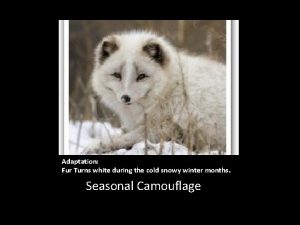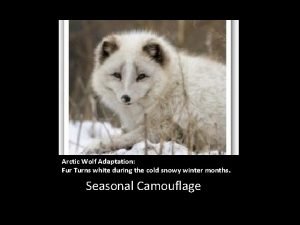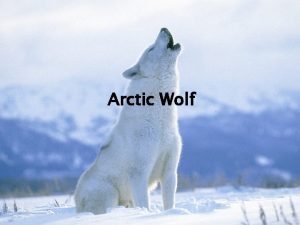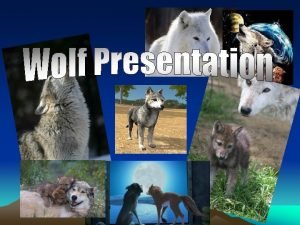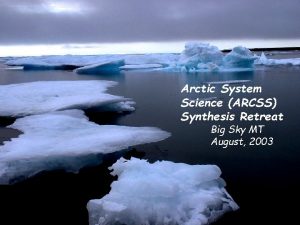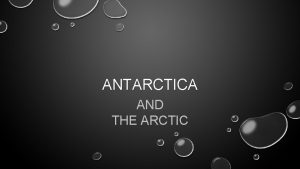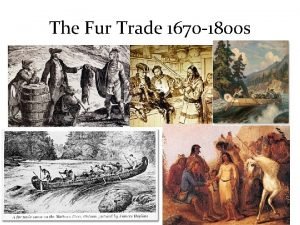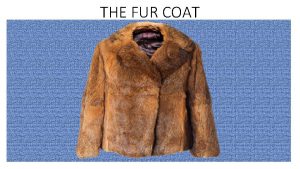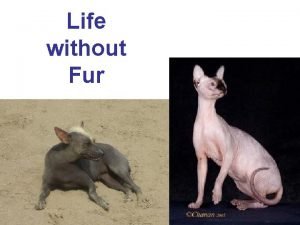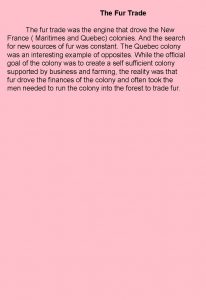Arctic Wolf Adaptation Fur Turns white during the












- Slides: 12

Arctic Wolf Adaptation: Fur Turns white during the cold snowy winter months. Seasonal Camouflage

Camel Adaptation: Produces very little sweat and urine. *Regulates Body Temperature • Advantagous for survival to void little liquid in hot conditions • Camels do not store water in hump. It is fatty tissue insulating from the heat.

Cheeta Adaptation Long, powerful legs *Take fewer strides from point A to B. *Long powerful tail helps to maintain balance when changing direction at extremely high speeds.

Dolphin Adaptation: Nostrils (blowholes) located on the top of their heads. *To breathe

Giraff Adaptation: Long, muscular neck and long, flexible tongue *Used to reach and rip leaves from branches

Goat Adaptation: Hooves with a soft, spongy, inner pad surrounded by a hard, outer rim. For climbing in steep, rocky, slippery terrain. Provides traction in precarious habitats.

Flying squirrel Adaptation: Flaps of featherless skin between their front and back legs It glides by means of furry flaps of skin that stretch out and taut on both sides of body when limbs are extended.

Penguin Adaptation: Wings that look like flippers To mainly steer and stop.

Seal Adaptation: Streamlined body shape *Used to swim faster when it is catching their prey and escaping from predator.

Shark Adaptation: Oil stored in liver Sharks do not have a swim bladder for bouyancy, cartilage is lighter than bone which helps them float.

Crocodile Adaptation: Webbed feet *Helps to steer and balance when swimming

Walrus Adaptation: Layer of fat or blubber around their body *For Warmth. Insulation traps heat.
